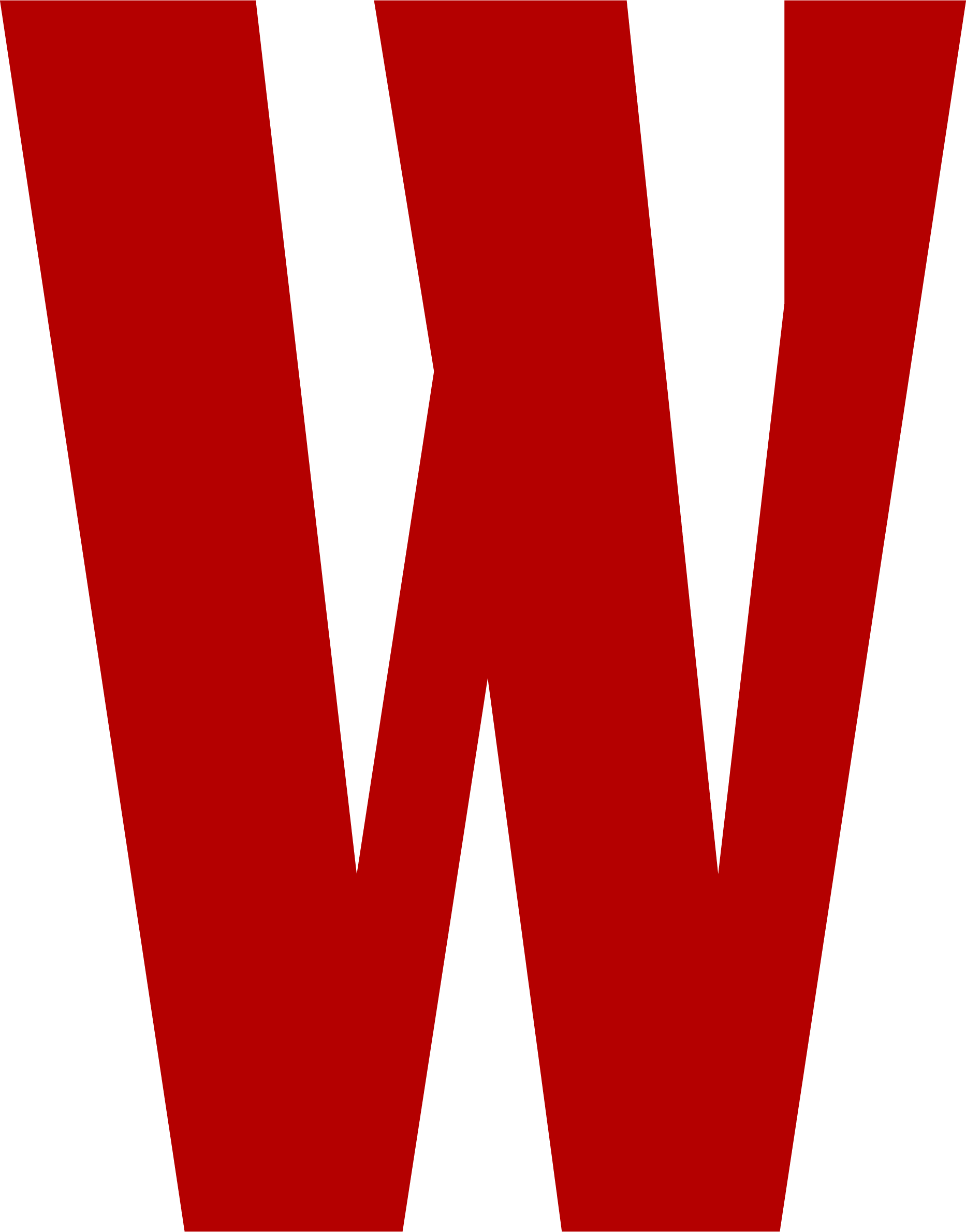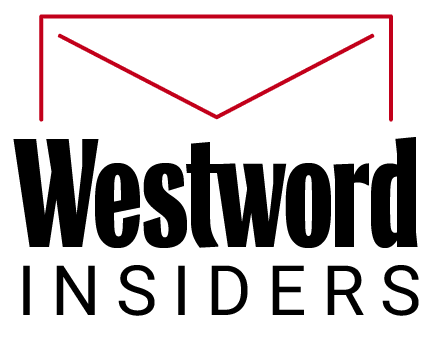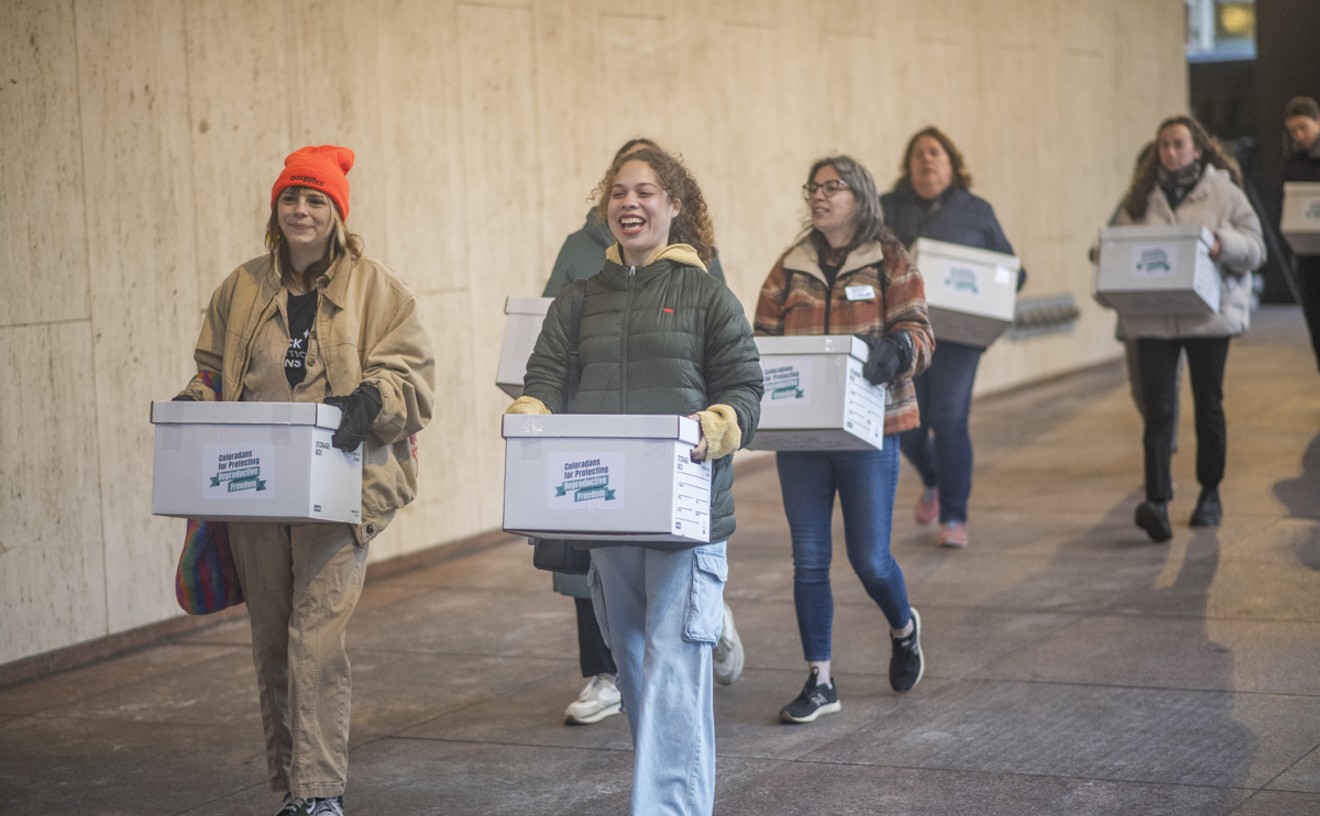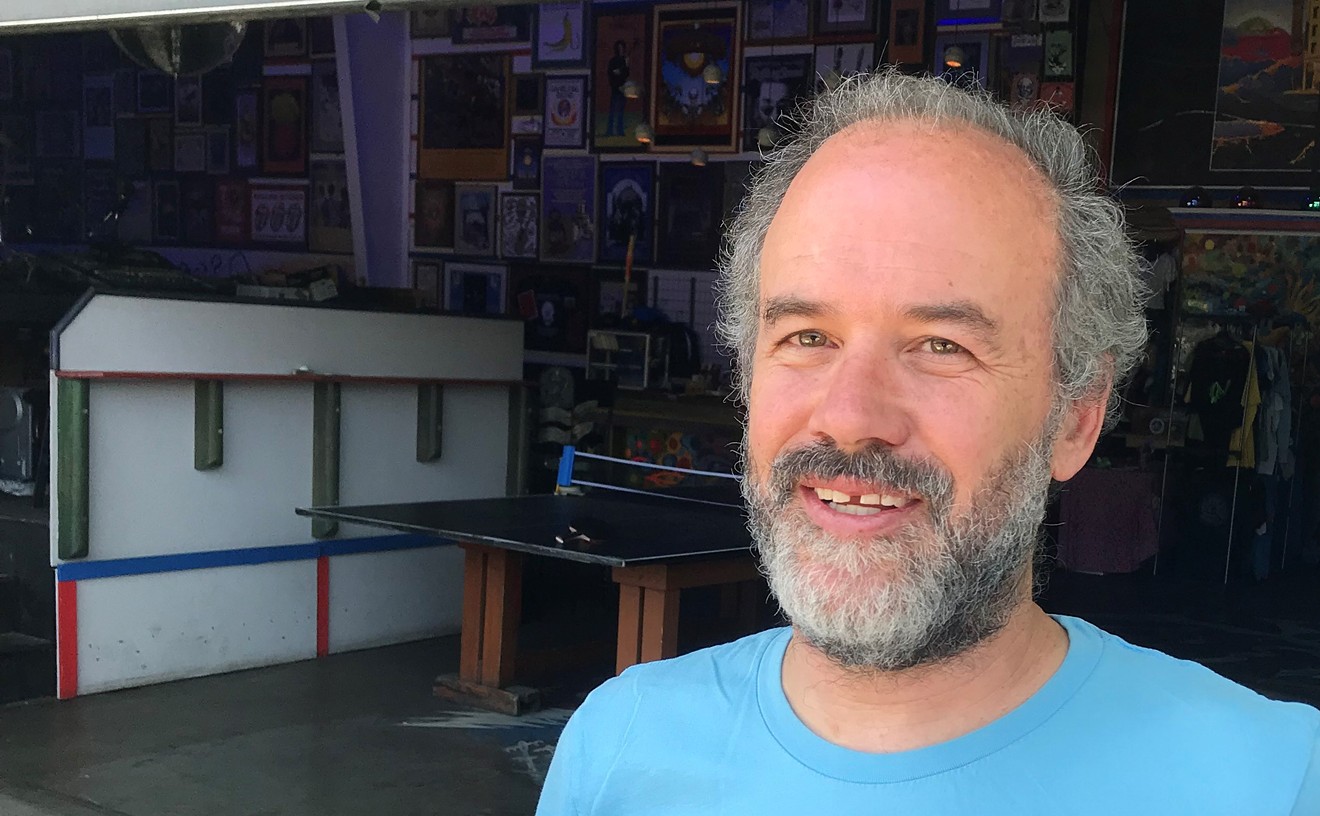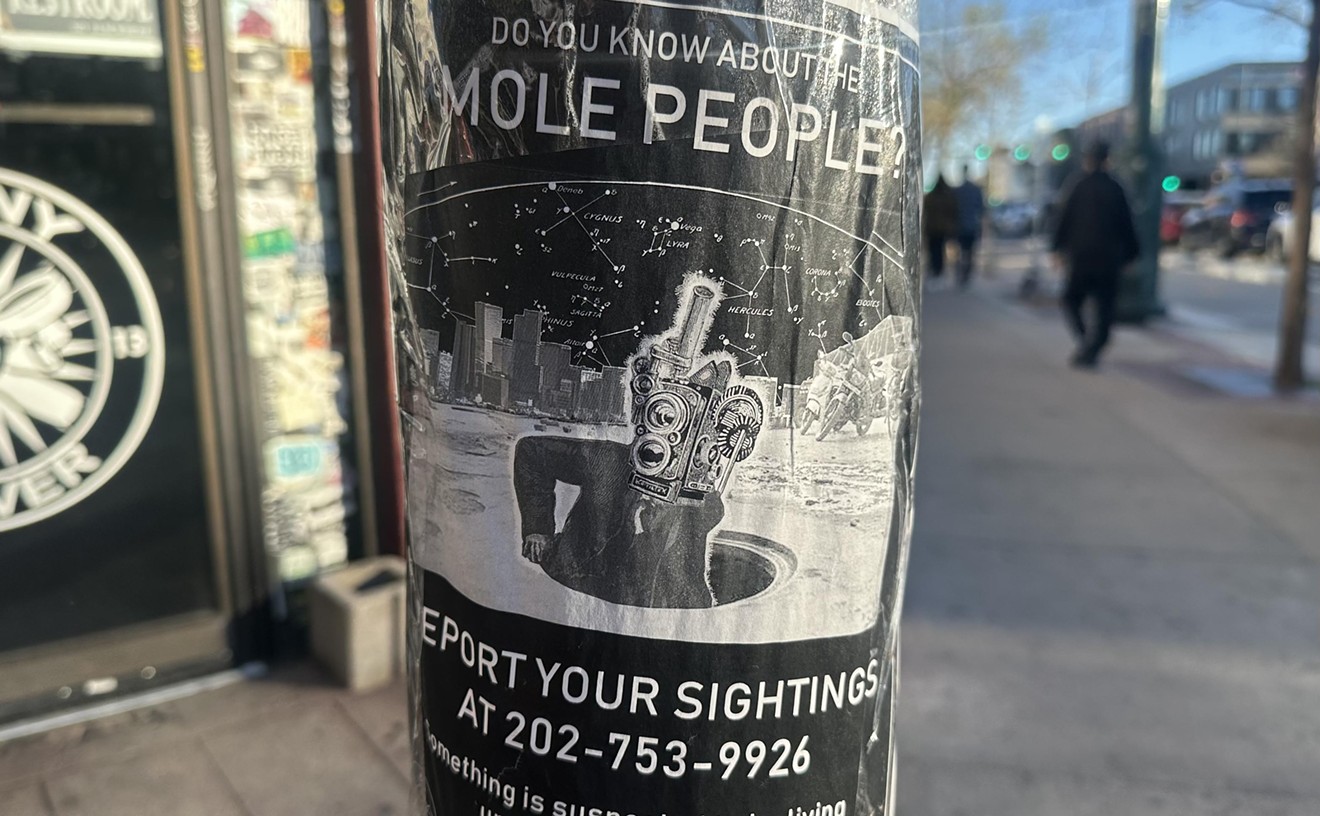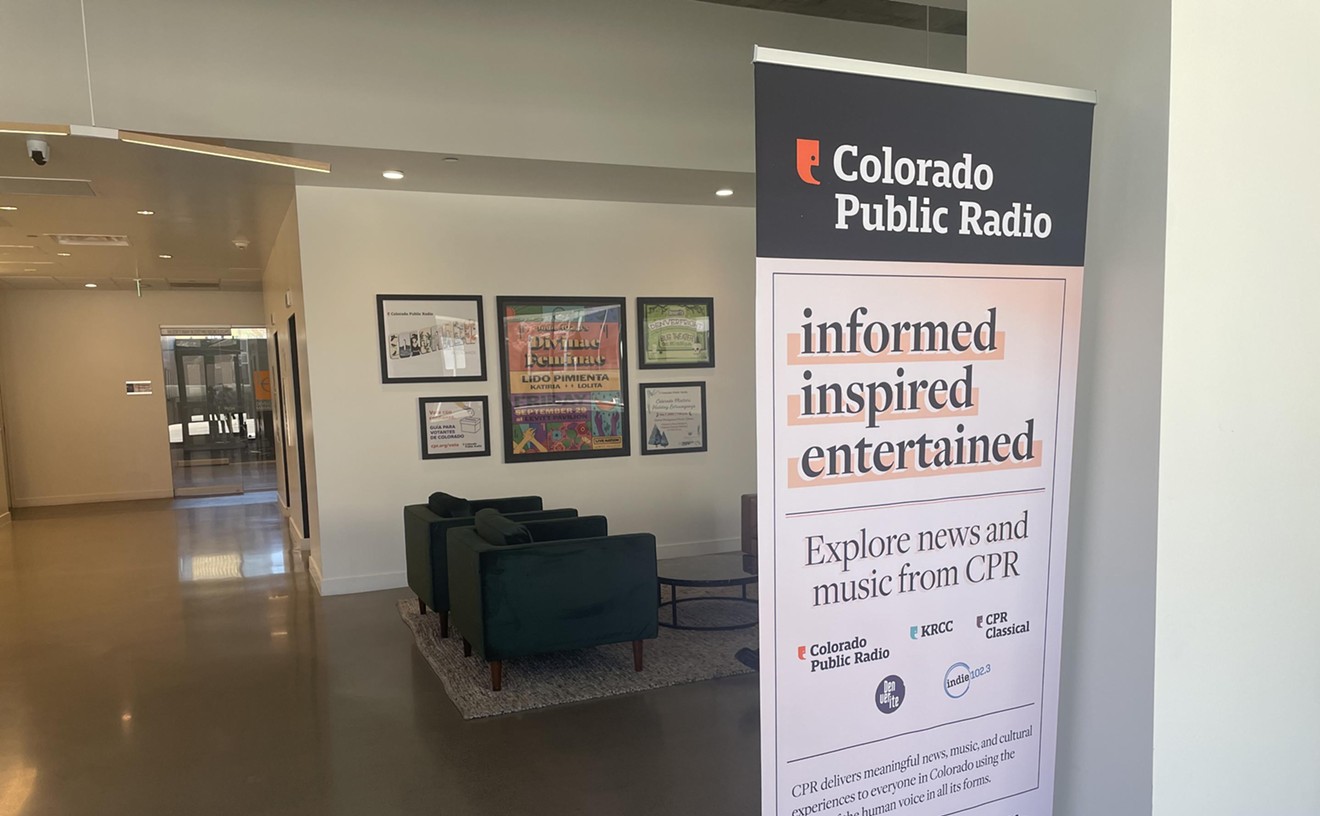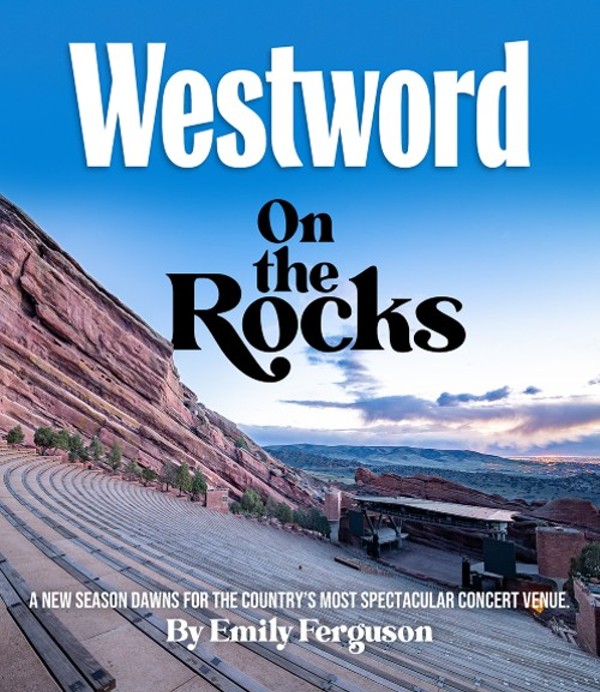Once, in the age of Ozzie and Harriet, the single-story, 820-square foot, two-bedroom "Matchless" model was an emblem of upward mobility and consumer bliss. Now, almost fifty years later, Sullivan walks through the back yard, where construction crews recently completed the foundations for the enlarged kitchen, master suite, family room and garage that will be added to the original structure. As director of the Northglenn Neighborhood Development Corporation, Sullivan chose to renovate this residence not only because he was able to pick it up cheaply from its previous -- and illegal -- use as a multi-unit rental, but because of its symbolic location.
As the first filing built in 1959 on lot #1 of the soon-to-be-burgeoning "North Glenn," the brick abode was one of five show homes that introduced an entire generation of Denverites to clean, affordable, suburban living. For better display, the residence was positioned on the plot at a 45-degree angle.
Forty-seven years later, that presents problems for Sullivan.
"On a normal lot, we'd put a two-car garage, but we had to make sure the addition was five feet from the property line," he explains, motioning to the rectangular hole that will soon be filled with a one-and-a-half-car garage.
He steps inside through the back door, walking past heaps of linoleum scraps and construction debris to where the Custom Deluxe-model Frigidaire oven has been jacked out from the original kitchen wall. The stove now serves as a makeshift display table for the remodeling blueprints that Sullivan believes illustrate the first hope of many small hopes for struggling, first-tier suburbs around Denver.
The non-profit NNDC was established by the Northglenn City Council in 2004 with a goal of encouraging residents to enlarge their existing homes with add-ons and pop-tops. The organization has come up with a variety of options based on the seven basic floor plans that were the foundation of the North Glenn subdivision as it expanded acre by acre through the '60s and '70s; following these plans, homeowners can widen the garage, attach an extra room or two, even plop on an extra level. And for a modest fee, the NNDC will even produce the permit-stamped architectural drawings and guide clients all the way through the bidding, construction and inspection process. With materials and labor, Sullivan says, the total cost for the homeowner would run between $75,000 and $80,000.
Down in Denver, barely a week passes in popular neighborhoods like Hilltop or Washington Park without a new spat arising over a pop-top or scrape-off of an old home. But while a row of 3,500-square-foot houses going up in certain central Denver neighborhoods would have residents screaming bloody murder, a nice, neat line of McMansions along the winding streets of Northglenn might prompt city officials to throw a parade. That's because the NNDC isn't just working to make the area look nicer, it's also trying to put economic patches on a city in the early stages of decline.
Once pockets of white middle-class prosperity around the country, inner-ring suburbs have taken on characteristics often associated with the urban cores of the cities they surround. Many of the towns whose main housing stock was built in the post-WWII era now suffer from woes that traditionally afflicted downtown urban centers: falling tax bases, an aging population and sagging infrastructure. Social problems have followed as well, and nightly news stories about gangs, crime, drugs and poverty are no longer narratives exclusive to the inner city, but extend into suburbia. In the metro area, places like Lakewood, Englewood and Commerce City have racial, economic and political demographics that more closely resemble Denver than they do Highlands Ranch or Superior.
As sprawl continues to spill new housing and business parks farther onto the prairie, landlocked suburbs such as Northglenn have found themselves left out of the development boom, subject to the same vacuum of sales-tax dollars that they previously sucked out of Denver. And in the meantime, a dramatic resurgence of investment in Denver's core -- neighborhoods that haven't seen new construction in thirty years are now in the crosshairs of loft developers and fix-and-flip artists -- is driving real-estate prices up and poorer residents out. If these trends continue, the metro area could soon come to resemble East Coast cities, where the low-income neighborhoods are found not in the urban interior, but in the first ring of modest towns that surround it -- places that are not quite urban and no longer really suburban.
Northglenn isn't blighted -- not yet. But it's come a long way from "the most perfectly planned community in America," as LIFE magazine once dubbed it.
Ozzie and Harriet wouldn't recognize the place.
Bill Sullivan lives in Park Hill, one of Denver's oldest neighborhoods, and makes the 25-minute drive out to the suburbs for work. His job with the NNDC is a role reversal, too, "a flip-flop for me, because I've been doing primarily affordable housing and community development in rebuilding inner cities," he says.
The sixty-year-old community activist got his start in redevelopment in his home town of Cleveland, Ohio, fixing up old Victorians in neighborhoods that by the '70s had become archetypal urban slums. For the next three decades, Sullivan worked in economic development in places like New York and Puerto Rico, and helped to create the Neighborhood Capital Corporation, a national group formed to provide more financial resources for non-profit housing developers. After spending ten years as the founder and CEO of the Rocky Mountain Mutual Housing Association (and studying housing models in Europe on a Fannie Mae Foundation fellowship), in 2004 Sullivan was asked to serve on the NNDC board. He took over as executive director last year.
The NNDC's office is located behind an aging Safeway, in a split-level cinderblock building with steel bars on the windows that was originally a dentist's office, then a local union headquarters. Sullivan describes it as "urban-riot architecture," a '60s style seemingly intended to shield occupants from the outside world.
Inside his office, Sullivan puzzles over two large maps taped on the wall that together depict modern-day Northglenn: 7.5 square miles of looping neighborhood streets bisected by collector roads and I-25. The city has reached nearly 100 percent buildout, and lacking undeveloped acres to focus on, planners have begun looking at existing structures for redevelopment possibilities. The room is filled with photographs of three houses that the NNDC purchased in the past year, along with balsa-wood models of what the fixer-uppers will look like after an overhaul.
"In the first round of development here, all the houses were 600 to 800 square feet and one level," Sullivan says, pointing to the center of the maps. "Later, other homes were built that were bi-levels and tri-levels. They're solid houses, built very well." The houses may be small by today's standards, but the lots are large. "In Denver, the standard house lot is 6,200 square feet," he explains. "Some of the lots out here, if you look at the radius, are 8,400 square feet. They're gigantic."
But the gigantic yards weren't enough to maintain property values. Sullivan posted the maps two years ago in order to chart the number of single-family homes that were being used as rentals -- each identified with a red dot, a total of 600 dots on the 9,206 homes within the Northglenn city limits. This year, Sullivan created a second map and found that the number of rentals had jumped to 950 rentals. For a bedroom community that had long boasted a strong home-occupancy rate, that was a hefty increase in under two years.
It indicated that people who are trying to sell their homes in Northglenn for $150,000 to $200,000 are meeting with intense competition in new boomburgs like Firestone and Dacono fourteen miles to the north, where homes twice as big go for the same price and no money down. Instead of selling at dramatically reduced prices, many owners are renting out their Northglenn homes, waiting to see if the market returns. So are the investor companies that have snatched up hundreds of addresses at foreclosure auctions over the past two years. (Colorado has the worst foreclosure rate in the nation, and Adams County -- which includes Northglenn -- has the distinction of being at the top of that heap.)
Sullivan taps his finger on a series of red dots: "Here you have four rental properties right in a row." He's seen the trend before. One of the tools he used to gauge change in inner-city neighborhoods was to take Polaroids of every house on a block. Absentee landlords are less likely to care for lawns or invest significant money in upkeep, and over the months and years, the pictures could be compiled into a time-lapse exhibit of a neighborhood sliding into blight.
He nods to the row of rentals. "I'll bet you a dollar's worth of doughnuts that you could take anyone out there and they'd be able to pick them out just by looking at them," Sullivan says. Cracked driveways, broken gutters, dead grass -- that's the stuff that keeps nearby homeowners awake at night. First a house, then a block, and finally, a whole street. There goes the neighborhood.
Neglected houses are the exception rather than the rule in Northglenn's quiet environs. The majority of residences are well cared for. The sturdy accessories of working-class principles -- lawn figurines, motor homes and boats -- show lifetimes of saving. But from 1990 to 2000, the median household income in Northglenn dropped from $49,957 to $48,276, while the median income for the metro area as a whole increased by $4,500. Census figures show the slow uptick in the average age of a Northglenn resident: from eighteen in 1970 to 33 years old today. The owners of these tidy homes are aging quickly, and their kids are buying newer, bigger houses outside of Northglenn -- some in the city, others in suburbs that are farther out. And as they go, so do retailers.
The retail drain is a particularly acute problem for Colorado municipalities. Since 1982, when the state adopted the Gallagher Amendment -- which limits the percentage of taxes coming from homeowners' property taxes -- cities have relied on sales taxes for as much as two-thirds of their budgets. This puts leaders in a never-ending race for sales-tax dollars and the shopping destinations that generate them. But the big mall developers are looking for strategic geography that's based not so much on population as on income levels. Retail developers follow the money -- and the money follows the retail developments.
While most of the housing stock in Northglenn is affordable -- about 97 percent fits the guidelines, according to Sullivan -- and accessible to a broad pool of people, that pool is also shallow and could dry up during an economic downturn. A greater diversity of income levels (i.e., more rich people) would mean more disposable income, which would mean more money spent at local retail outlets, which would mean more tax dollars that the city can spend on fixing potholes and buying firefighter uniforms. "But we don't have a balance of housing that we need to attract people to come to the community with a higher income bracket," Sullivan acknowledges. For a town, it's like trying to play a game of Battleship with only tugboats.
And so an inner-ring suburb like Northglenn is stuck both geographically and economically in the middle of everywhere -- and going nowhere. Its housing is too old to be new and too new to be old. Its population isn't affluent enough to draw upscale retailers, but not downtrodden enough to qualify for federal or state renewal dollars.
"So when the city's mothers and fathers take a look at the numbers," Sullivan says, "They say, 'My goodness, is this what's going to happen? How do we intervene?'"
Kathy Mott became an official suburbanite in 1960, when she moved to 11183 Northglenn Drive with her husband and two small children. She was 25 years old; her husband, a Denver native, worked for the Civil Service. They chose the cheapest home North Glenn offered, the "Matchless" model, for $11,700. It had two bedrooms, a 10-by-11-foot kitchen, an unfinished basement and no garage. But no down payment was required, just $400 plus closing costs.
The North Glenn subdivision was a Perl-Mack project, devised by Samuel Primack and Jordan Perlmutter, who'd recently completed their first development of more than a thousand homes near 77th Avenue and Pecos Street, an area now within unincorporated Adams County. The team had been looking for more space to build on, and settled on some land along the recently completed expansion of I-25, then known as the Valley Highway.
"There was a need in the metropolitan area for this type of housing," Perlmutter recalls.
Suburbs were not a new phenomenon; Denver had been sprouting developments of single-family homes along streetcar lines since the 1870s. But the rise of the automobile had provided millions with superior mobility and convenience, and the Interstate Highway Act of 1956 would birth another 42,000 miles of new highways, providing access to cheap land outside the city center for completely auto-dependent developments. From 1952 to 1960, the nation invested $100 billion to raise 11 million housing units across the country. With the Federal Housing Administration underwriting new housing and the GI Bill underwriting veterans, families hurried to their little houses on the former prairie.
Many of the post-World War II developments were mass-produced Levittowns: row after row of units laid down on the landscape like plops of cookie dough, with little consideration given to public infrastructure or employment and retail centers. But Perl-Mack wanted North Glenn to be different. The developers mapped out drawings for a functioning regional center with housing, industrial, commercial and retail laid out along a wide-open bucolic landscape. The residential component included parks, neighborhood schools and recreational amenities like swimming pools.
"People weren't planning total communities at that time," says Perlmutter. "It was a new idea."
"It was exciting to move into a brand-new community," Mott remembers.
When construction started in 1959, more than 15,000 people visited the first five show homes and deluged the Perl-Mack staff with sales. The concept of suburbia as its own functioning center -- rather than a mere addendum to an urban core -- was heralded as visionary. Magazines such as Look, along with the National Association of Homebuilders, cited the development as an amazing innovation. In 1962, the same year it featured a cover story on how bomb shelters could be decorated to accommodate houseguests, LIFE declared North Glenn "the most perfect planned community in America."
"We were the first family to move in on our street," Mott recalls, but others quickly followed. "At the time, there was only one other house north of us, and there was a big lake and no houses around that lake. And it wasn't too long until the old farmer who owned it sold the lake and all the area around it. So they drained it and tore up all the trees and built houses up there."
Most of those houses held young families with children. Lots and lots of children. "I just remember that there were kids everywhere," Mott says. "Our kids had lots of playmates. They loved the big back yards. They dug tunnels and built forts and all kinds of stuff back then."
The initial development a success, Perl-Mack began focusing on the west side of the highway, building more high-end homes there. "We were building about 1,000 houses a year," Perlmutter says. With more residents came the retailers, the office space and the crown jewel of Perl-Mack's plan: the Northglenn Mall. The enclosed shopping center opened in 1968, the same day that massive Cinderella City opened on the other side of Denver, in suburban Englewood.
The area was still unincorporated at the time, and residents' groups opposed the efforts of nearby Thornton to annex it. In 1969, the Colorado Supreme Court issued a ruling allowing "North Glenn" to form its own city. With 27,937 residents, Northglenn immediately became the largest population center in Adams County. The Northglenn Mall attracted up to 100,000 shoppers a week and provided as much as 45 percent of the new city's sales-tax revenue. And Perl-Mack soon moved on, opening the Southglenn Mall in what is now Centennial in 1974, the same year it started the Montbello housing development in northeast Denver.
In 1976, Northglenn adopted an official city song, "Our Glenn," a ditty that went to the tune of "Five Foot Two, Eyes of Blue": "Several years ago/No way to grow/Now we've built a City for show/Then everybody loved our Glenn..." The lyrics spoke to the optimism that officials had for their thriving municipality. But in 1977, the Westminster Mall opened seven miles to the east.
"The Northglenn Mall was wonderful when it was first built, but after a number of years, it started to decline," remembers Mott. "JC Penney pulled out and went to Westminster because it was bigger and better and newer." As more shoppers and retailers moved to the new mall, the Northglenn facility began to struggle. By 1997, only 20 percent of its space was leased, and its sales-tax contribution had fallen to a meager 7 percent of Northglenn's budget.
Northglenn might have avoided the sales-tax crunch early on by annexing new land to accommodate future growth, as neighboring Thornton and Westminster had done for decades. This enabled those suburbs to diversify their retail and housing stock (and the income of their residents) as they continually added newer, larger homes. In fact, Thornton and Westminster managed to push boundaries right up to and around Northglenn, effectively choking off Perl-Mack's perfect town.
Jordan Perlmutter and Company, the descendant of the original Perl-Mack group, repurchased the near-vacant Northglenn Mall in 2001, only to tear it down and redevelop the property into the big-box Northglenn Marketplace. Smaller shopping centers have deteriorated, too; the Garland Shopping Center now houses a head shop, a pawnshop, a tattoo parlor, a liquor store and the Bingo Barn. But failing strip malls are mostly symptoms of decline, not causes.
"People are leapfrogging Northglenn," says Kathie Novak, a native of the suburb who spent ten years on the Northglenn City Council before becoming mayor in 2002. "So the question is, how do you get your sales-tax revenues to increase with the same population? Well, you either have to increase the tax rates or you increase the purchases. And if your retail centers are dying and going from restaurants and stores to nonprofits and churches, you have the same problem that central cities faced thirty years ago."
An attempt to draw higher-income residents by building a $32 million recreation center -- complete with two ice rinks and an indoor turf field -- was narrowly voted down by Northglenn voters in 2005. Mott now works part-time at the Northglenn Library, which is small and outdated. She's miffed that voters declined a proposed sales-tax increase to build a replacement and that the city council wouldn't give any land to a new branch. She says the library district might move the branch to Thornton, leaving Northglenn without a library.
The Northglenn school district had to close one middle school due to declining enrollment, and another may go soon. "It used to be all young families. Now they're all older people, retired -- a lot of the original homeowners," says Mott. "I think that Northglenn is in trouble, because we're surrounded and don't have any room to acquire and grow. We're in a really bad spot like that."
After 43 years, Mott and her husband had to sell their home -- for $185,000 -- because her husband has a walker and could no longer use the stairs. "We would've stayed there if we could," Mott says. "We loved that house."
They now live in a townhome nearby. Moving out of Northglenn "never even occurred to us," Mott says.
For years, terms like "inner-city" and "urban" have been used as euphemisms for poverty, minorities and crime, in the same way that the word "suburban" became a synonym for affluent, white homogeneity. But that doesn't describe areas in many inner-ring suburbs, such as northwest Aurora.
"Aurora is as urban of a city as Denver," says Preston Prince, executive director for the Aurora Housing Authority. "There is a lot of movement of traditional inner-city populations. There's gentrification of many traditionally African-American neighborhoods, so many are moving out to Green Valley Ranch and certain areas of Aurora." But as affluent whites move back into the cities, they push the poor out into places that they can afford. Donate a bike to a program for "inner-city kids," and it could be going to a youngster in suburban Lakewood or Westminster.
According to Mike Rinner, senior real-estate analyst with the Genesis Group, housing is in such demand in some central Denver neighborhoods that places like Washington Park and Platte Park saw zero foreclosures last year. "So that's a striking difference from when you get close to more than 2 percent of the existing housing stock across a metro area that's within foreclosure," he says.
"We can reasonably say that all the low-income people who lived in central Denver pretty much don't live there anymore," says Karen Lado of the Denver office for the Enterprise Foundation, a national community-development organization. "Where they are likely to go is those places that have older, less attractive housing stock."
The Enterprise Foundation commissioned a recent report on the affordability of the Denver housing market. While Denver County still has the lowest median family income and highest poverty rate of the five-county area, the 148-page analysis shows that housing available to lower-income residents is now generally concentrated in neighborhoods built during the '40s, '50s and '60s -- creating a vague ring around the edge of the city and just outside of it. While pre-WWII neighborhoods close to the core often have historic character with an intrinsic value, newer areas aren't buoyed by the same qualities. "It's a kind of housing stock that's not as attractive by modern standards," says Lado. "It doesn't have the appeal of the pre-war housing, and it doesn't have the amenities of the homes built after 1990."
In poorer southwest Denver neighborhoods like Mar Lee, Barnum West and Westwood, many of the homes are concrete-block construction or stucco built on a slab. "You don't even have basements in a lot of these places," Lado says. "And then you have neighborhoods that weren't built to any kind of code because they weren't incorporated."
These were among the last areas annexed by Denver. In 1974, Colorado voters -- worried by the specter of court-ordered busing -- approved the Poundstone Amendment, which prevented Denver from annexing additional areas, basically fencing off the city. "It was reflective of the times and the fear that people felt about the center city and minorities that lived there," says John Parr, senior counsel at the Alliance for Regional Stewardship. Outside of Denver, other unincorporated areas banded together. Lakewood, for example, grew out of a collection of neighborhoods that "pulled together in a pretty unholy alliance to make sure they wouldn't get annexed," Parr says.
Thirty years later, the demographic changes in these inner-ring suburbs are evident. Adams County School District 50, which covers southern Westminster, now has 62 percent of its students on free or reduced-cost lunches, a number that's close to the 72 percent of Denver Public Schools.
More immigrants are moving in, too, according to a study by the Brookings Institution. Though many immigrants still live within Denver's city limits, more than 50 percent of the population in sections of north Aurora, Lakewood and unincorporated Adams County are identified as foreign-born. In parts of Thornton and Federal Heights, that number is approaching 30 percent. Neighborhoods that were once almost exclusively white now have some of the largest minority populations in the metro area.
Minorities accounted for roughly 25 percent of Northglenn's total population in 2000. But throughout the '90s, they were moving to the town at twice the rate of whites, with the largest increase coming from those identifying themselves as Hispanic.
Many of these inner-ring suburbs aren't as well equipped for the influx. "A lot of these communities are relatively small, which means that they might not have the federal pass-through dollars that Denver has because they are so small," Lado explains. "You have to be a certain size to have your own allocation versus going through a state. So they may not have the funds to bring to bear. They may not have the policies in place because they've never dealt with this. And then there may be a lag in accepting that this is happening."
Researchers only recently began to examine the connection between sprawl and the decline of inner-ring suburbs, as metro areas grow from not just the central city and first suburbs, but stretch out into outer suburbs, subcenters and ultra-low density exurbs. Many municipal leaders are looking for answers from the Urban Land Institute, which has published numerous studies on the first circle of suburbs. The Washington, D.C.-based National League of Cities has even established the First Tier Suburbs Council, an advocacy organization specifically focused on inner-ring issues.
In metro Denver, where a cold war existed between the city and suburbs throughout the '60s and '70s, municipal governments are now much more eager to connect to the core city. "These inner-ring suburbs have changed. They are now more similar to the central city and more urban in many regards," says Bill Johnston, a senior planner with the Denver Regional Council of Governments. "In addition to the housing becoming old, the streets, the curbs and gutters, the water lines and sewer lines of these older suburbs are reaching that fifty-year mark. So it's not just that homeowners have to address the problems of renovating their houses, it's that the whole community is faced with having to replace aging infrastructure."
Earlier this year, the regional planning agency released a series of reports on a subject that many first-tier suburbs see as their last, best hope: infill development. Lakewood and Englewood found that they could create new revenue streams by tearing up old malls to create new downtowns and moving their cities to the higher-density, mixed-use model of urban cores. CityCenter Englewood is anchored by a light-rail station, and with the 119 miles of new commuter and light rail being planned as part of RTD's FasTracks, many suburbs are looking toward mass-transit stops as potential areas for redevelopment.
"One of the reasons that central cities have gotten a renewed interest in the last fifteen years is that people figured out that traffic is actually worse out on the perimeter than it is close in," says Johnston. Inner-ring suburbs also have this advantage, he notes, "and that's strategic, because that's still where a huge number of jobs are, and it's an opportunity for people to live in proximity to where they work and ride transit, and reduce the need for people to use automobiles."
As the president of the Metro Mayors Caucus, Novak has offered presentations on Northglenn's housing redevelopment program to other city leaders. But many of the standard tools, such as tax-increment financing, and eminent domain have been challenged by citizens and the courts. Earlier this year, when Northglenn tried to create an urban-renewal authority for an area that was to surround a proposed light-rail stop, residents and property owners protested and got the measure reversed. Now the proposed location for that light-rail stop is in Thornton.
From above, cities like Thornton, Westminster, Broomfield and Commerce City are starting to resemble misshapen bananas as they continue their narrow push farther onto the prairie. But annexation just postpones the inevitable problem as old neighborhoods clash with new.
"Cities that are growing rapidly have the same issues that we do, but often they're distracted and aren't dealing with them," Novak notes. "Things aren't bad in Northglenn, by any means, and it's good we're not waiting until it gets that way to start taking action. We have that perception as kind of being a working-class, blue-collar suburb. But it's not the reality. And even if it is, those people should be allowed to have the lifestyle they want. And by encouraging them to go to Dacono and Firestone, how is that good for the region?"
Bigger, better, newer and farther out.
"We're sort of like locusts," says Lado. "We go, we use the housing, and then we're gone. You have places like Rochester, New York, that haven't grown in population, but their land mass has increased. Because it's like you abandon your inner ring, so you go to your next ring out."
Northglenn's original developer has followed generations of the trend. Its three-decade-old Southglenn Mall is being rebuilt as the outdoor Streets at Southglenn. As housing prices rose in Park Hill and Five Points, its Montbello neighborhood -- cut off from the rest of the city by I-70 -- became known as Denver's primary example of a "suburban ghetto," and is now being struck by a crippling wave of home foreclosures and vacancies.
Perl-Mack dissolved in 1983, but with Jordan Perlmutter & Co., Perlmutter continues to develop projects in the north metro area. (His second cousin, Ed Perlmutter, just won the 7th Congressional District house seat, which includes Northglenn.) Last year, Perlmutter opened Larkridge, a 240-acre power center on the far tip of Thornton. Featuring a Sears Grand, a Circuit City, a Dick's Sporting Goods and more, Larkridge is projected to become the biggest shopping center in Colorado -- and the centerpiece for a new boom in housing to the north.
As Bill Sullivan slowly drives his hatchback through the winding streets of Northglenn, he gazes intently at the houses, like a scientist alert for any variations in his experiment. He points out the nicely kept lawns and such small details as flowerpots and new fences.
"This guy, he's involved with everything in the city," Sullivan says, indicating a two-story house with lattices attached to the sides. "And next door, he says, he has a house with six families living there." It's the middle of the day, and four trucks are parked on the street in front of the house.
In Denver, over-occupancy complaints are common. But Northglenn has only begun getting such reports.
Sullivan laughs. "This whole area is going brown and more working-class," he says. "And you don't hear people talking about that. But you have to recognize it. The current population is going to be selling their house -- or being unsuccessful at selling their house -- and renting it out for $800 to $1,000 a month."
Often, you can spot the rentals that are the dots on Sullivan's map: The bushes are overgrown, and weeds poke up through cracks in the driveway.
Sullivan pulls up to the house at 1710 Leroy Drive, which was being used as an office for the parks and rec department. The city deeded it to the Northglenn Neighborhood Development Corporation on the condition that the NNDC tear down the aluminum sheds in back and rehab the property. Sullivan's group is going to put $275,000 into the house and create a first-floor master suite, a dining room, a great room, an attached two-car garage and a wraparound porch.
"It's a 20,000-square-foot lot," he says with amazement. And it abuts green space.
For a city to encourage homeowners to stay put and update their properties is a low-cost way to test the theory that an inner-ring suburb can age gracefully. But it's a gamble. As he walks back to the car, Sullivan acknowledges that the NNDC will probably lose some money on the first houses redeveloped: "The people around here, they're scratching their head saying, ŒYou're going to put how much money into that house? Are you crazy?'"
But as Sullivan drives past another house with a cracked driveway, he argues that the city has to find a way to turn its momentum toward renewal rather than decline. "We've got to try to change that mentality," he says. "And we've got to get people thinking about how the city is going to change and how they're going to adapt."


